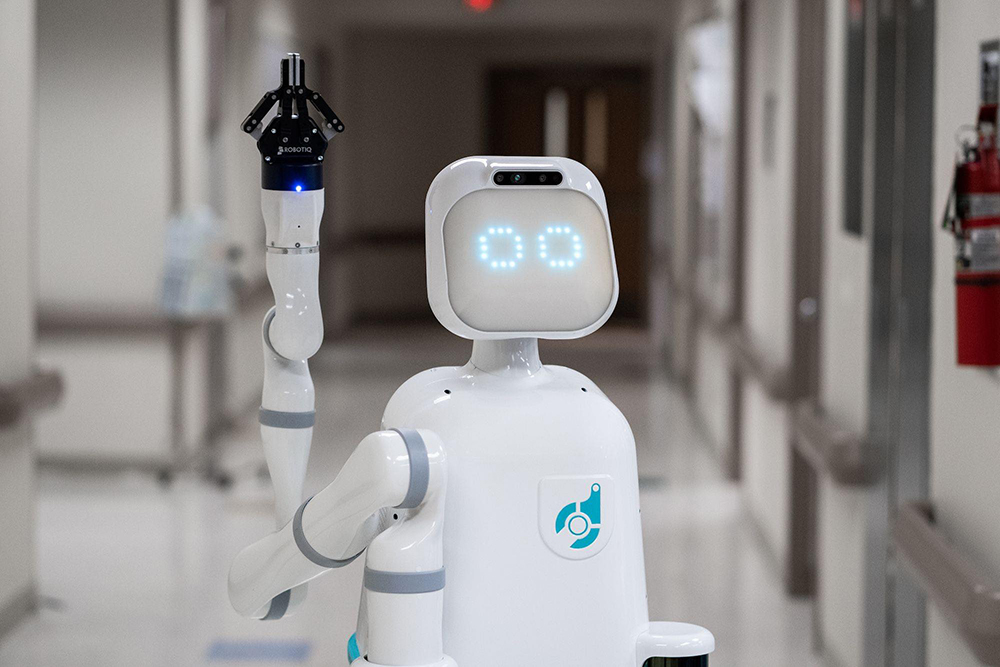
Moxi hospital assistant robot, image courtesy of Diligent Robotics where Carla is Head of Design
The term robotic implies a machine as simulacrum of a human that walks and talks haltingly and serves its master. Remember Woody Allen playing the robot butler in the film Sleeper or Star Wars’ smartaleck, C-3PO? It is tempting to stereotype robots as humorous machines. In science fiction as in real life, robot designers and engineers have imbued machines with characteristics/personalities that make them more “friendly,” albeit sometimes exasperating. Yet the definition of a robot goes beyond the humanoid model. Carla Diana, a product designer and technologist who chairs the 4D Design Department at Cranbrook, discusses the increasingly more nuanced ways of introducing robots into everyday life in her new book My Robot Gets Me: How Social Design Can Make New Products More Human (Harvard Business Review Press). She examines how the current generation of smart products are not as smart as we think. She includes many mundane machines and automatic devices in the robot genre, and this, she says, is only the beginning, the early stages. More conceptualizing is yet to come. Her delightful and insightful book focuses on innovative design as a means to better integrate robotics into daily life, even beyond already incredible features, like a Tesla automobile that is programmed (or trained, if you prefer) to pick you up on its own. You might say that Diana advocates for housebroken machines. She is an elegant thinker whose ideas will change our perception of the smart machines in our midst and to come.
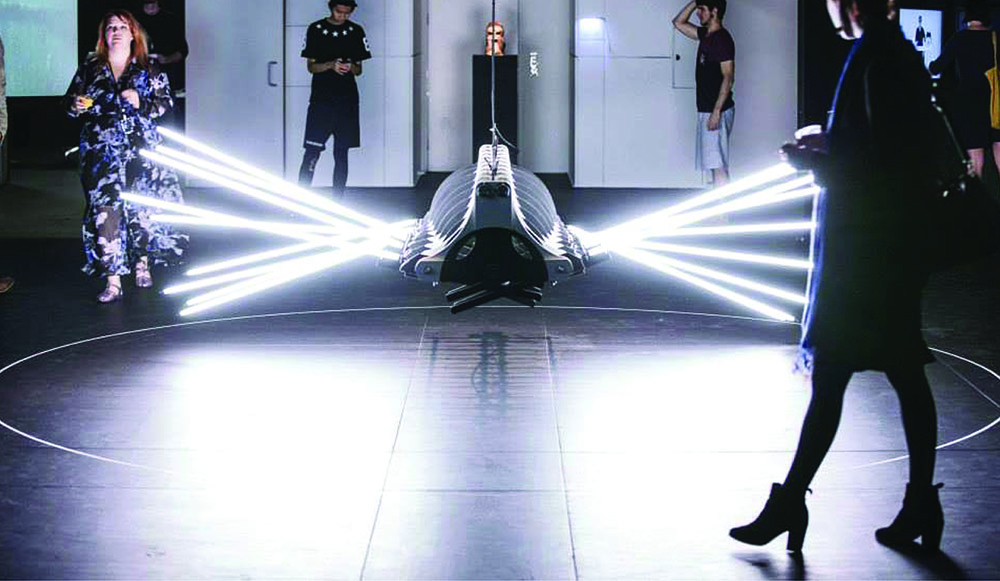
Michael Candy, Big Dipper robotic light sculpture
Steven Heller: It takes a while to get used to some of the terminology in our new world. Like “friend” is not friendship, “smart” does not signify bright, “social” implies a network of users. Computers have changed the vocabulary but must they also alter behavior?
Carla Diana: Right! There is a lot of terminology that is specific to the area of our newly connected, sometimes robot-driven products. I do think that computers change our human behavior in many ways. We often don’t even realize that it’s taking place. Just as you’ve mentioned terms that have a certain connotation in our human world having a different meaning for products, the reverse is true. We might talk about needing a “recharge” if we are tired, and needing to “calibrate” thoughts to be on the same page with another person.
Treating machines as part of the family is a big expectation! There isn’t necessarily room in a household for new family members, both from a physical and a psychic point of view, but we can certainly grow to love and depend on certain products. I think they are family members in the way that pets are family members, that is, we depend on a dog’s presence for comfort, distraction, slipper delivery, etc., but the relationship isn’t necessarily front and center in terms of all the social interactions taking place in a room at a given time.
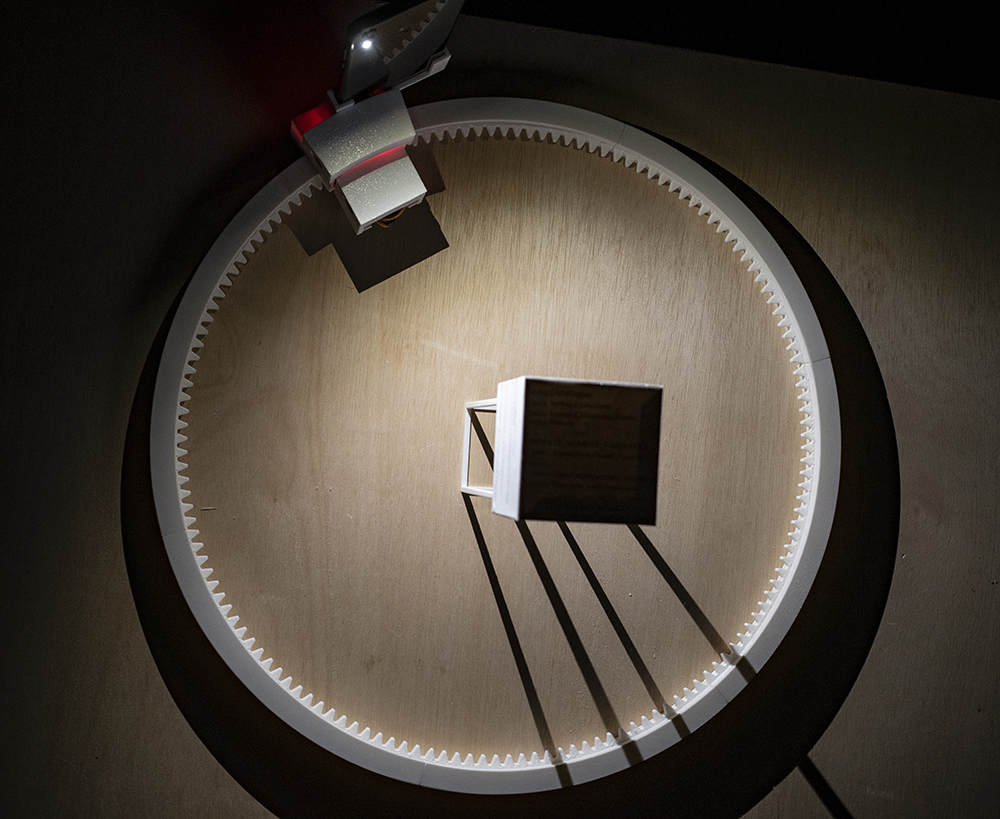
Jerry Li, The Inspection, augmented reality kinetic sculpture
SH: What is social design and how are you and others integrating social design into products?
CD: Social Design, as I discuss it in My Robot Gets Me, is an overarching strategy for creative direction that places the dynamics of a relationship between a person and a product at the center of all design activities. Rather than thinking about the form, interaction, materials, and any other aspects as separate, siloed activities, it asks for a holistic approach that looks at all of those characteristics through a social lens. The book lays out a framework to aid in keeping these myriad aspects in mind, starting with the physical presence, moving on to the way an object expresses itself through light, sound and movement, then a look at how it interacts in diverse contexts and ultimately how it exists within an ecosystem of other products in a person’s life.
My colleagues in the design world and I are using this approach to conceive of new products, such as the hospital robot, Moxi, that is developed by Diligent Robotics, for which I serve as Head of Design. I have used social design techniques such as scenario storyboarding and bodystorming, or “acting out” a range of interactions in order to work with the team to conceive of the robot’s behavior in diverse situations. This type of planning helps the team maintain a unified ideal for what the robot should be and do, providing core guidance for design decisions and also helping people in different disciplines (engineering, software development, marketing, etc.) to understand why the design details are the way they are.
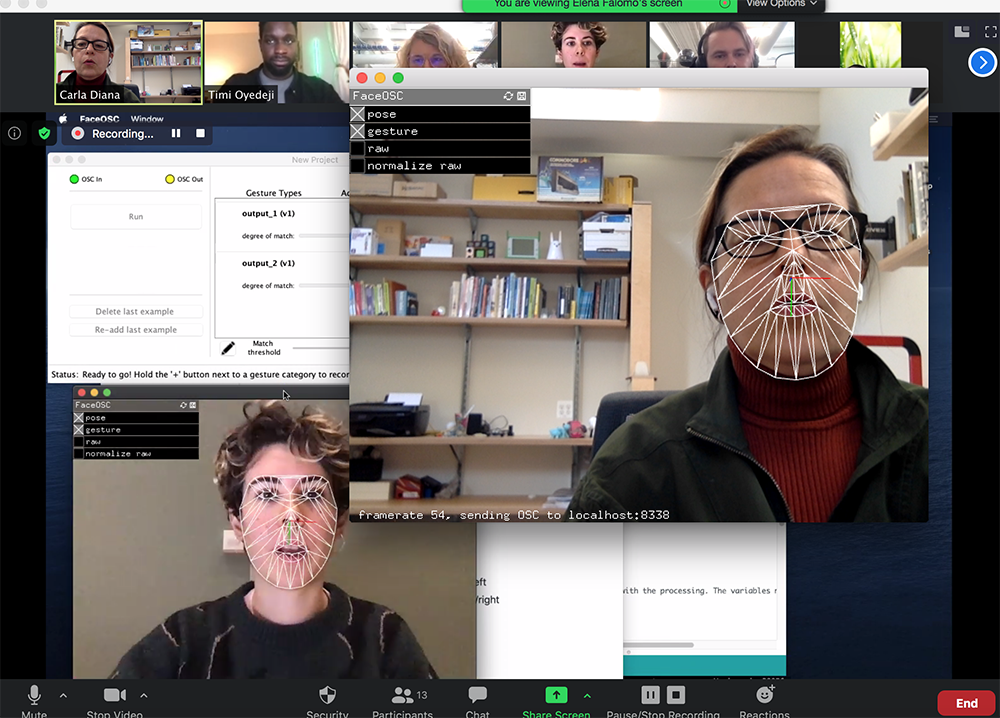
Screenshot from “teachable Homes” workshop on machine learning and gesture controlled interfaces run by Timi Oyedeji and Elena Falomo
SH: You cite statistics on how many “elderly” people have adopted smart products. Would you say that the learning curves are now short enough to accommodate their resistance or have we, who grew up with this stuff, just gotten older, more experienced, and wiser?
CD: I think it’s a combination of those two phenomena coming together. As time goes on, we will have more adults who grew up as “digital natives”, like my son, who knew how to navigate a mobile device interface from the time he was one-year old (if not earlier), and as these adults get older, they are more accustomed to common interaction patterns and frequently used design affordances. At the same time, social design emerges from designers’ ability to create intuitive interfaces due to the affordability and accessibility of more sophisticated components and development. The two experiences go hand in hand.
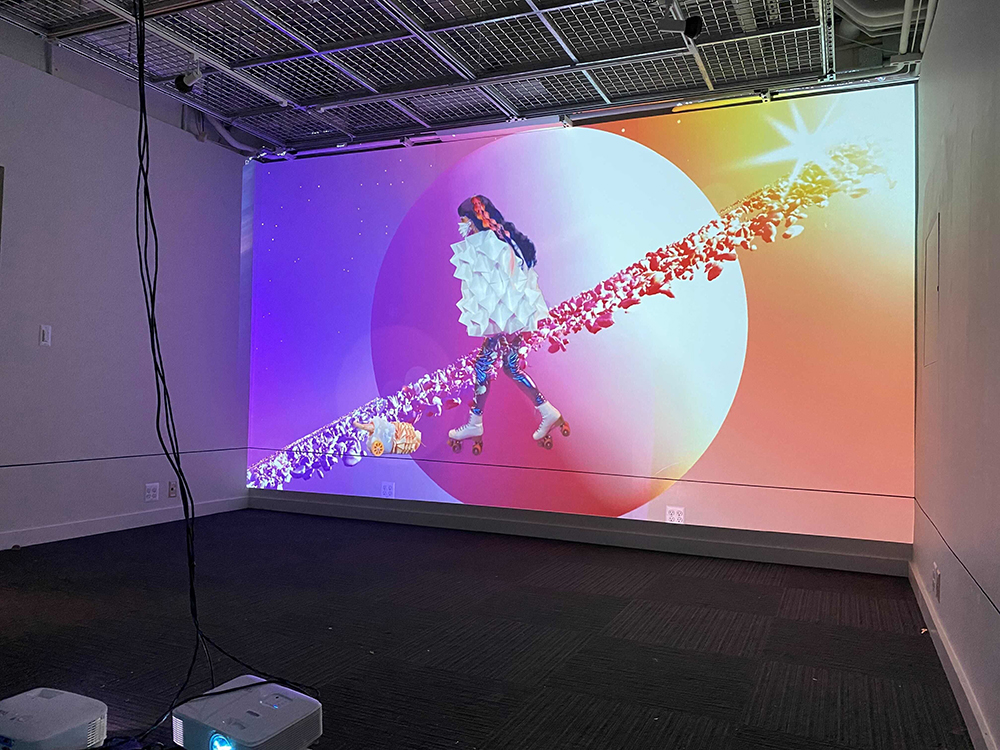
Merel Noorlander, projection/installation of responsive body coat
SH: You run the 4D Design department at Cranbrook, what is 4D?
CD: The 4D Design program at Cranbrook offers a two-year MFA program is focused on exploring critical questions about the world around us through creative applications of emerging technology. It’s based on the practice of tangible interaction, that is, the design of artifacts that harness both the physical and the digital. It includes everything from augmented reality to applied robotics and 3D printing, and the essence of it is around products and experiences that are responsive. The common thread is that all of these things will have the ability to change over time through intrinsic behaviors such as light patterns, sound, motion and other dynamic displays. (The fourth “D” is time!)
4D Design offers the opportunity to build a hybrid design practice where the creative and the technical hold equal weight. It encourages a holistic look at dynamic design elements as well as a focus on overall context in terms of place, time and ergonomics. Rather than having designers relegated to thinking only about what’s on a screen, we are finally at a place and time where the value of thinking about how spaces and objects can be imbued with data and interact with people is more clearly recognized.
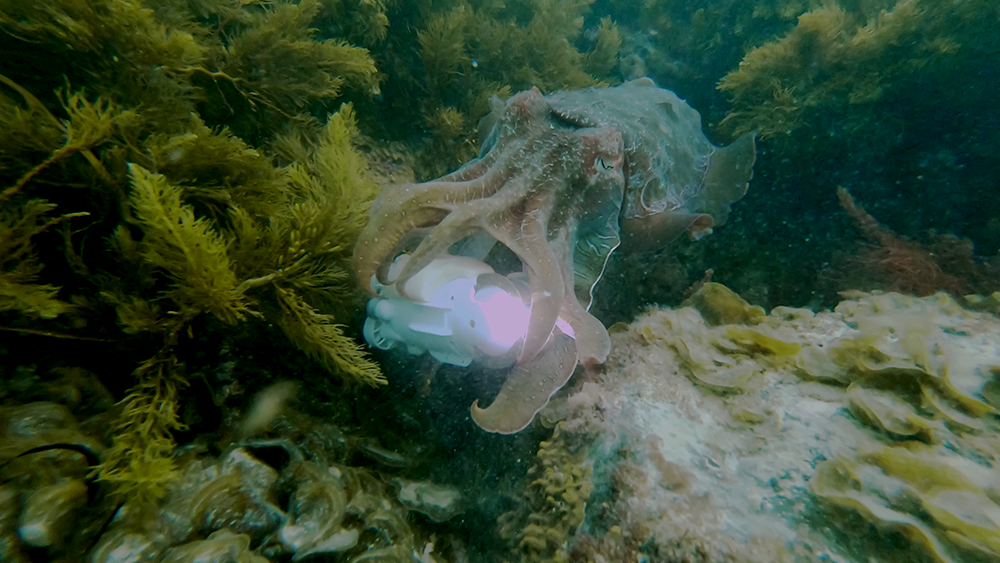
Michael Candy, Little Sunfish aquatic robot, still from narrative video about the robot’s escape from a nuclear reactor
SH: How do you see 4D as integrating into our future lives?
CD: I see 4D integrating into our lives in the near future through an increasing number of everyday objects that have programmed, embedded electronics, and therefore the ability to take advantage of the dynamic behaviors that I talk about in the book and in my teaching at Cranbrook, that is, the ability to understand people’s intentions through sophisticated inputs like touch, voice and gesture and then respond with expressive behaviors based on light, sound and movement. This may mean a chandelier that can adjust its position, color and brightness to be appropriate to the context of a social gathering or a bin that can navigate office hallways and facilitate recycling.
SH: You devote a chapter to the complexities of communication between product and person. Does this require an evolutionary adaptation?
CD: I hope not! The benefit of social design is to piggyback on the behaviors that we’ve already developed and that are ingrained in us through just moving around the world and doing what humans know how to do. Rather than requiring an evolutionary adaptation, I see people and their products adapting to one another to take advantage of a kind of “shorthand” communication, where a product may understand an abbreviated, spoken turn of phrase (“Alexa, timer, 3 minutes”), and a person can understand the modalities that the product can display, like a pulsing light or short tone to indicate that your coffee is ready.
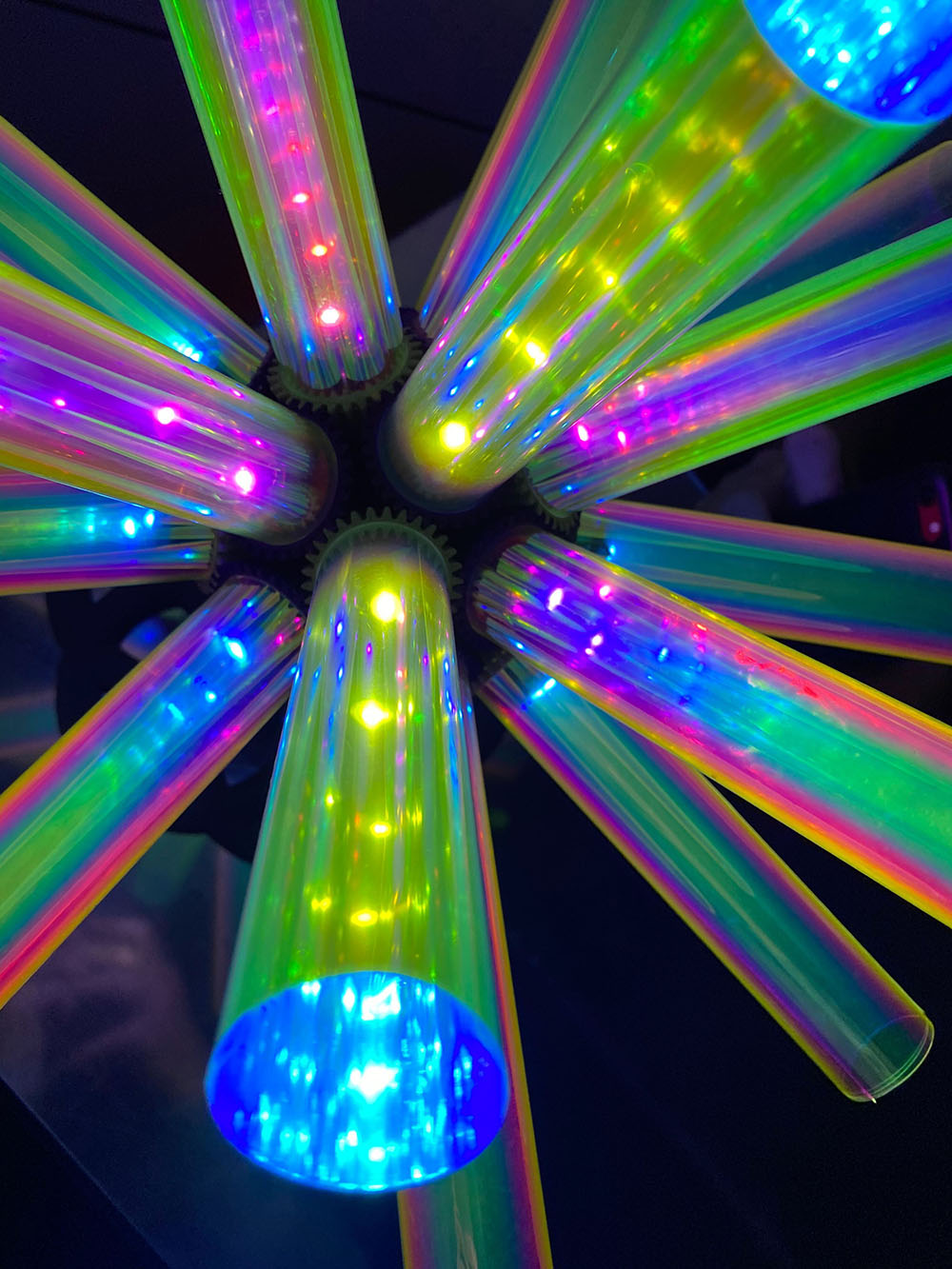
Chris McKay, Urchin robotic light installation
SH: Robots are envisioned in many forms and called by different names. Do you foresee a standardized definition of robot?
CD: The definition of “robot” is an interesting, esoteric question that my students and I in the 4D program at Cranbrook grapple with on a regular basis. It’s common to think of robots as those mythical creature-like machines from science fiction, whereas in my book I challenge the reader to think of things like microphones and desk lamps as robots. Rather than foreseeing a standardized definition, I think that robotics applied to everyday objects, when done well, will become so commonplace that we won’t think of them as robots anymore, they will just be enhanced versions of whatever the traditional object might be, like an automated ottoman or a responsive task lamp. The idea of “robot” will cease to feel foreign or separate from an object that has a more established identity.
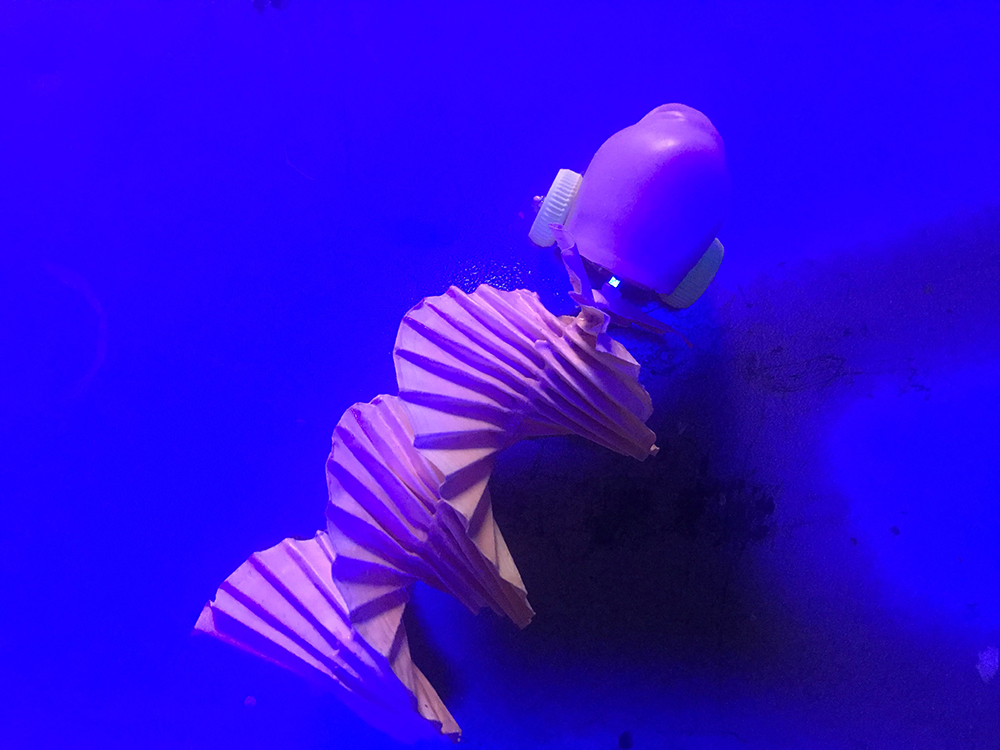
Merel Noorlander, kinetic creature, part of installation
SH: And, if so, will there be a set of social mores that will apply to smart machines? Will we one day see a robot bill of rights?
CD: I do think there will be social mores that apply to smart machines. There are interesting studies that show that we respond with compassion to objects if we perceive of them as being the slightest bit autonomous. The MIT researcher Kate Darling has several research papers based on workshops where people object to torturing “baby dinosaur” Pleo robots and hesitate to smash hammers onto crude bug-like robots. Rather than a bill of rights, I think it will be more like loose social expectations and behaviors of etiquette that emerge from culture, you know, like the way one pours tea or which fork to use. It may be considered déclassé to kick the delivery robot. Oh, and by the way, when I’m home with my five-year-old I insist on using courtesies with our conversational agents; I say, “Alexa, stop please” or “Siri, set a timer for 10 minutes please”. It’s less about the robot having feelings than just a general modeling of expectations around how we treat one another in social situations.
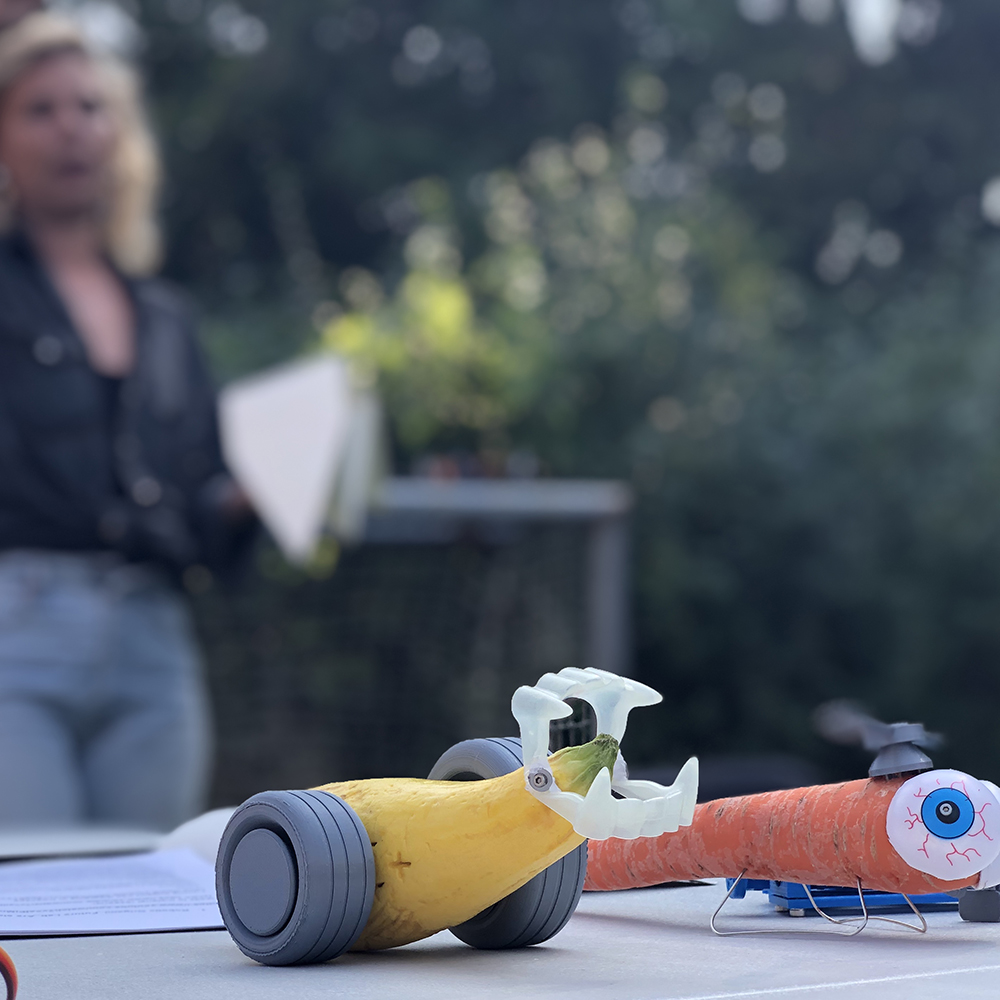
Merel Noorlander, seminar mockups
SH: Smart machines exist to serve mankind, but how far does this service go when you name and design machines with human traits?
CD: This is a tricky one that’s been coming up a lot! It’s one that I think about when it comes to race and gender because many of the robots that I design have connotations based on their color, materials and the way that the form leans toward one gender or another. For example, with hospital service robots it’s helpful to design them to feel like “part of the team”. In a largely female workforce that may mean leaning towards female characteristics, but then there is the risk of reinforcing a gender stereotype simply through the robots presence, which isn’t great in the long run.
And as far as service goes, well, I won’t go down the X-rated path today, but let’s just say that with any emerging technology the porn industry tends to innovate more quickly than any other in the commercial realm.

